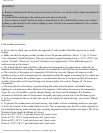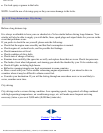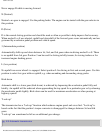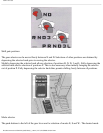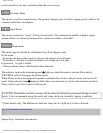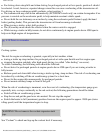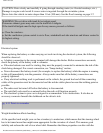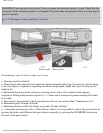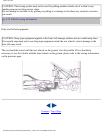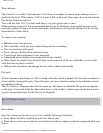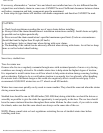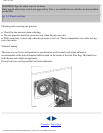
1994 Volvo 850
CAUTION: Drive slowly and carefully if going through standing water (i.e. flooded roadways, etc.).
Damage to engine could result if excess water is ingested through the air intake system.
Never drive the vehicle in water deeper than 1 foot (300 mm). See the flood warning on page 3:7.
WARNING! Do not drive with trunk lid or tailgate open!
Poisonous exhaust gases may enter via the trunk lid or tailgate.
If the trunk lid/tailgate must be kept open for any reason, proceed as follows:
● Close the windows.
● Set the ventilation system control to air to floor, windshield and side windows and blower control to
its highest setting.
Electrical system
When replacing the battery or when carrying out work involving the electrical system, the following
should be observed:
● A battery connection to the wrong terminal will damage the diodes. Before connections are made,
check the polarity of the battery with a voltmeter.
● If booster batteries are used for starting, they must be properly connected to minimize the risk of the
diode being damaged. For correct connection, see "Jump starting" section.
● Never disconnect the battery circuit (for example, to replace the battery) while the engine is running,
as this will immediately ruin the generator. Always make sure that all the battery connections are
properly tightened.
● If any electrical-welding work is performed on the vehicle, the ground lead and all the connecting
cables of the generator must be disconnected and the welder cables placed as near the welding point as
possible.
● The radio must be turned off before the battery is disconnected.
● The anti-theft code must be re-entered before the radio will function properly.
● The electrical system in your car is designed to accommodate Volvo accessories. It also has an
accessory connector beneath the dashboard on the driver's side.
pg. 4:11 Points to remember
Weight distribution affects handling
At the specified curb weight your car has a tendency to understeer, which means that the steering wheel
has to be turned more than might seem appropriate for the curvature of a bend. This ensures good
stability and reduces the risk of rear wheel skid. Remember that these properties can alter with the
file:///K|/ownersdocs/1994/1994_850/94850_4_7.html (6 of 9)12/30/2006 9:48:42 AM




